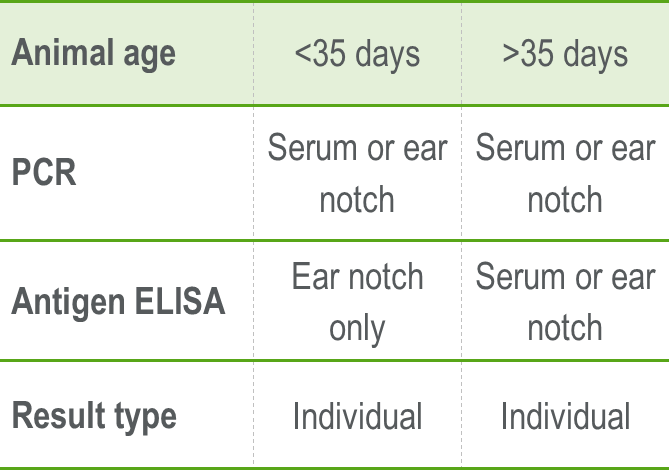Calf screening in dairy herds aims to identify and remove persistently infected (PI) animals before they can infect any pregnant cows.
An ideal time to sample calves is during tagging or disbudding. The antigen ELISA is a suitable test to use on ear notch samples for animals in this age group. PCR is a suitable test for serum or ear notch regardless of age.
PCR vs antigen ELISA – which to choose?
Tissue samples are tested in a pool by PCR, then all samples in a positive pool are individually tested by antigen ELISA.
Serum antigen ELISA is still NOT a suitable test for animals less than 35 days old due to the potential for false negative results. When serum samples are tested using PCR, the sera are pooled for PCR testing and then all samples in a positive pool are individually tested using PCR.
Benefits of PCR testing:
PCR testing is highly sensitive and will detect transiently infected animals (TI) as well as PI animals. For young calves, we recommend testing tissue samples by PCR. We use a combination of PCR (pooled samples) then antigen ELISA (on individuals in positive pools), which allows for differentiation of TI and PI animals in most cases.
Note: As there are no clear cut-off value between TI and PI animals, Gribbles Veterinary always recommends retesting positive animals 4-weeks later to minimise the chances of culling a TI animal, regardless of whether the positive test is completed by PCR or antigen ELISA.
Summary of testing options:


